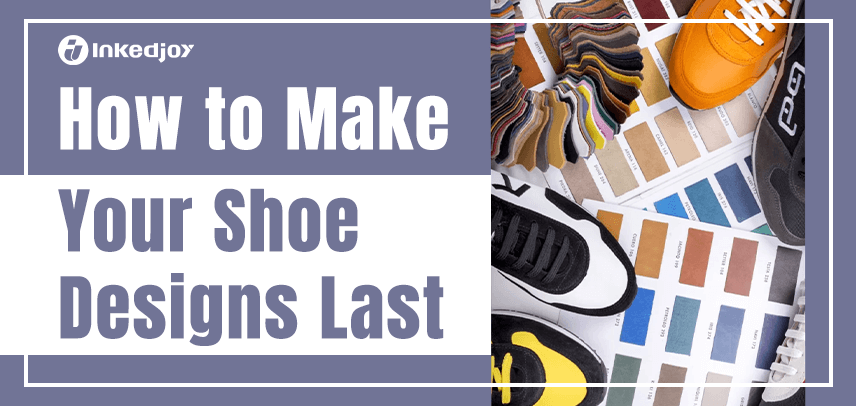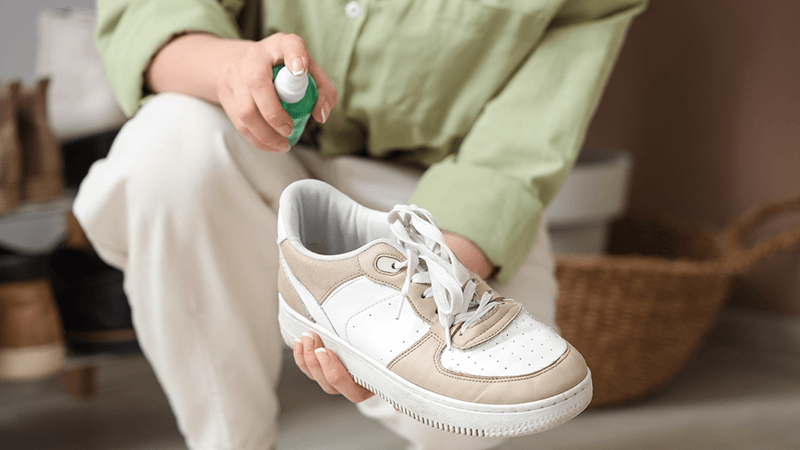
Custom Shoe Care 101: How to Make Your Designs Last
Custom shoes are the ideal combination of personal style and everyday footwear. Whether they feature detailed artwork, family images, or bold prints, these custom works of art need special attention so that they can continue to be at their best. With proper care routines, custom pieces can last much longer while still looking and feeling fresh.
Page overview:
Daily Maintenance Habits That Work
The Right Cleaning Supplies Do Matter
Step-by-Step Deep Cleaning Process
Step 1: Prepare Your Shoes to Be Cleaned
Step 2: Wipe the Surface Areas
Step 3: Attack Stubborn Stains
Step 4: Rinse and Dry Properly
Protecting Against Water Damage
Storage Solutions for Longevity
Daily Maintenance Habits That Work
Easy daily habits stop big cleaning problems down the line. Take off shoes as soon as you've stepped through puddles, mud, or soiled surfaces. A swift brushing with a soft-bristled brush removes surface grime before it's ground into the fabric. This 30-second habit stops 80% of deep stain problems.
Store bespoke shoes in a cool, dry place away from direct sunlight. UV light gradually discolours printed designs, especially vibrant reds and blues. Shoe trees maintain shape while allowing the shoes to breathe. Cedar shoe trees also naturally absorb moisture, preventing odour buildup that could require abrasive cleaning in the future.
Alternate between custom shoes and normal shoes. This permits materials to dry out entirely between wear, discouraging bacteria growth and breakdown of materials. Custom designs remain viable for much longer when provided with sufficient recovery time.
The Right Cleaning Supplies Do Matter
Harsh chemicals destroy custom prints faster than normal wear and tear. Never use bleach, strong detergents, or acetone-based cleaning products. Instead, stock up on lots of gentle soap, white vinegar, baking soda, and microfiber cloths. These mild cleaners do the job without damaging sensitive printing inks.
Soft-bristled toothbrushes are ideal for gentle cleaning in the vicinity of printed surfaces. Cotton swabs are ideal for cleaning extremely tight spots and dusting off without scratching. Melamine foam erasers (magic erasers) will remove scuff marks but test first on inconspicuous areas since they are mildly abrasive.
Step-by-Step Deep Cleaning Process
Step 1: Prepare Your Shoes to Be Cleaned
Begin by taking out laces and insoles where possible. This enables all surfaces to be cleaned comprehensively without obstruction. Mix a small quantity of a mild detergent with warm water – a teaspoonful in a cup of water approximately.
Step 2: Wipe the Surface Areas
Dip a microfiber cloth in the solution and wring it out so that it's damp but not wet. Gently rub the whole shoe surface, taking extra special care in the custom design area. Using small circular motions, wipe away dirt without smearing it around.
Step 3: Attack Stubborn Stains
For tougher stains, combine baking soda and water to form a paste. Rub the paste on the stain directly and allow it to sit for 15 minutes, then gently brush it with a soft brush. The paste naturally absorbs odors and oils without the use of chemicals.
Step 4: Rinse and Dry Properly
Rinse using a clean, damp cloth to remove any soap residue. Soap residue on footwear will pick up additional dirt and may lead to discoloration later. Pat dry using a clean towel, then allow shoes to air dry thoroughly before wearing.
Protecting Against Water Damage
Water is the single biggest threat to custom shoe art. Water can cause inks to run, discolor, or peel off the base material. Apply a waterproof spray specifically designed for the shoe's material before the first wear. Reapply this protection every few months or after deep cleaning.
If shoes become wet, take action quickly. Blot excess water off with a dry cloth, and stuff shoes with newspaper or paper towels to draw out internal moisture. Replace the paper every few hours until dry. Never apply direct heat sources such as radiators or hair dryers, as quick drying will crack materials and dissolve designs.
In case of emergencies, waterproof shoe covers offer temporary protection against sudden rain or snow. These cheap accessories protect against damage while preserving the custom design's integrity.

Stain Removal Strategies
Different stains demand special care. Grease stains are open to treatment with cornstarch – apply it straight and let it absorb the oil for some hours, then sweep away. Salt stains produced by winter weather need to be treated with diluted white vinegar followed by extensive rinsing.
Ink stains need to be treated with care. Blot immediately, not rubbing and spreading the ink. Dampen a cotton swab with rubbing alcohol and gently dab the edges of the stain, working your way inwards. Test this first on a hidden area to make sure it will not impact the custom print.
Allow mud to dry before trying to clean it off. Remove loose material by brushing after drying, and wash with mild soap solution as mentioned above. Cleaning wet muddy material will only force it further into the material.
Storage Solutions for Longevity
Proper storage increases the lifespan of custom shoes significantly. Avoid plastic bags, as they trap moisture and foster mold. Store them in shoe bags or storage boxes that have ventilation holes instead. Silica gel packs inside storage boxes absorb excess moisture automatically.
Do not expose custom shoes to extreme temperatures. Basements and attics are not a consistent temperature, and this will destabilize adhesives and cause colors to fade. Closets or under beds at room temperature are where most custom shoes should be stored.
Professional Cleaning Considerations
Professional cleaning is suitable for certain bespoke shoes, particularly those consisting of intricate designs or high-priced materials. Professional cleaners possess specialized equipment and expertise in different printing techniques. They are frequently able to extract obstinate stains that domestic cleaning cannot.
Before choosing a professional service, ask about their experience in cleaning custom-printed shoes. Standard shoe cleaning might not be appropriate for the specific requirements of printed artwork. Ask them about their process and the products used to determine if they are safe for custom artwork.
Inkedjoy's personalized shoes have quality prints that react well to quality care methods. Their canvas sneakers and slip-ons retain their bright colors when handled with the gentle routines outlined above. The printing methods of the company produce long-lasting designs that can withstand normal cleaning if done appropriately.
Of course, the quality and durability can vary between manufacturers, so it's helpful to know about the different print on demand sites for artists to ensure a quality underlying product.
Make Your Investment Count
Custom shoes are an investment, both personal and financial. Proper care of them ensures these pieces of art remain beautiful and wearable for years to come. Of course, the foundation of a long-lasting custom shoe is the quality of the footwear itself, so choosing a reputable supplier is the first step in making a wise investment.
Regular maintenance wards off major problems as well as preserves the cosmetic attributes that render each pair unique. Following these guidelines, custom footwear transforms from passing fashion fetishes to long-term additions to the wardrobe.



